Yingjing Xu
InsightEdit: Towards Better Instruction Following for Image Editing
Nov 26, 2024Abstract:In this paper, we focus on the task of instruction-based image editing. Previous works like InstructPix2Pix, InstructDiffusion, and SmartEdit have explored end-to-end editing. However, two limitations still remain: First, existing datasets suffer from low resolution, poor background consistency, and overly simplistic instructions. Second, current approaches mainly condition on the text while the rich image information is underexplored, therefore inferior in complex instruction following and maintaining background consistency. Targeting these issues, we first curated the AdvancedEdit dataset using a novel data construction pipeline, formulating a large-scale dataset with high visual quality, complex instructions, and good background consistency. Then, to further inject the rich image information, we introduce a two-stream bridging mechanism utilizing both the textual and visual features reasoned by the powerful Multimodal Large Language Models (MLLM) to guide the image editing process more precisely. Extensive results demonstrate that our approach, InsightEdit, achieves state-of-the-art performance, excelling in complex instruction following and maintaining high background consistency with the original image.
HypomimiaCoach: An AU-based Digital Therapy System for Hypomimia Detection & Rehabilitation with Parkinson's Disease
Oct 13, 2024

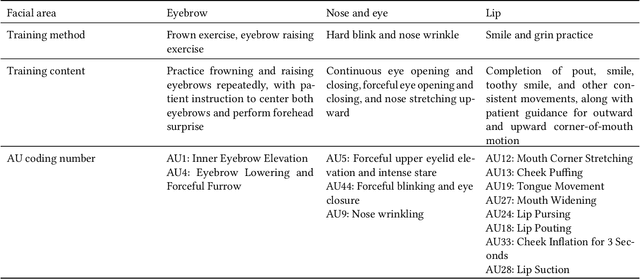
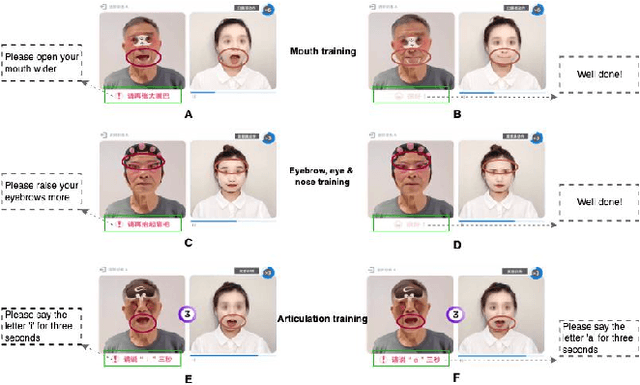
Abstract:Hypomimia is a non-motor symptom of Parkinson's disease that manifests as delayed facial movements and expressions, along with challenges in articulation and emotion. Currently, subjective evaluation by neurologists is the primary method for hypomimia detection, and conventional rehabilitation approaches heavily rely on verbal prompts from rehabilitation physicians. There remains a deficiency in accessible, user-friendly and scientifically rigorous assistive tools for hypomimia treatments. To investigate this, we developed HypomimaCoach, an Action Unit (AU)-based digital therapy system for hypomimia detection and rehabilitation in Parkinson's disease. The HypomimaCoach system was designed to facilitate engagement through the incorporation of both relaxed and controlled rehabilitation exercises, while also stimulating initiative through the integration of digital therapies that incorporated traditional face training methods. We extract action unit(AU) features and their relationship for hypomimia detection. In order to facilitate rehabilitation, a series of training programmes have been devised based on the Action Units (AUs) and patients are provided with real-time feedback through an additional AU recognition model, which guides them through their training routines. A pilot study was conducted with seven participants in China, all of whom exhibited symptoms of Parkinson's disease hypomimia. The results of the pilot study demonstrated a positive impact on participants' self-efficacy, with favourable feedback received. Furthermore, physician evaluations validated the system's applicability in a therapeutic setting for patients with Parkinson's disease, as well as its potential value in clinical applications.
SkinGEN: an Explainable Dermatology Diagnosis-to-Generation Framework with Interactive Vision-Language Models
Apr 23, 2024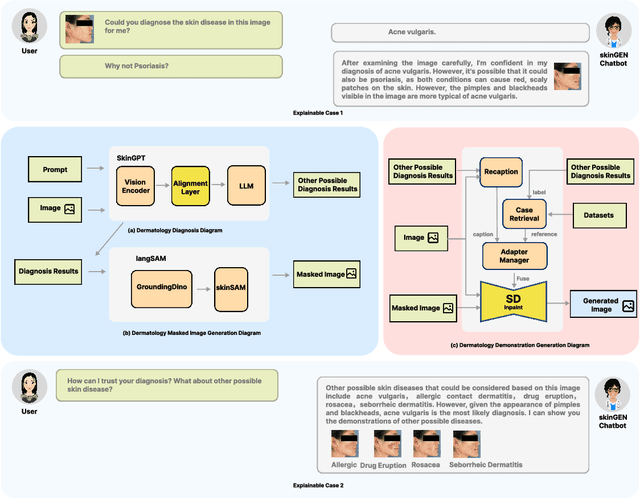
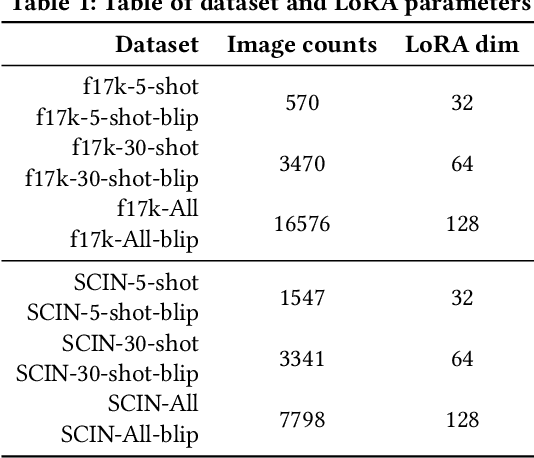
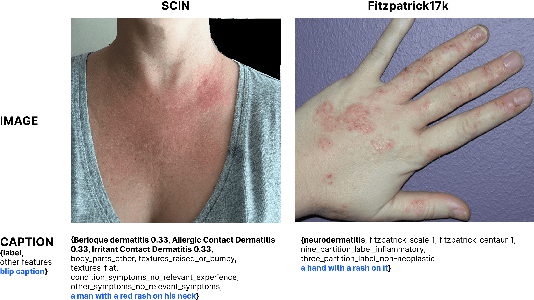
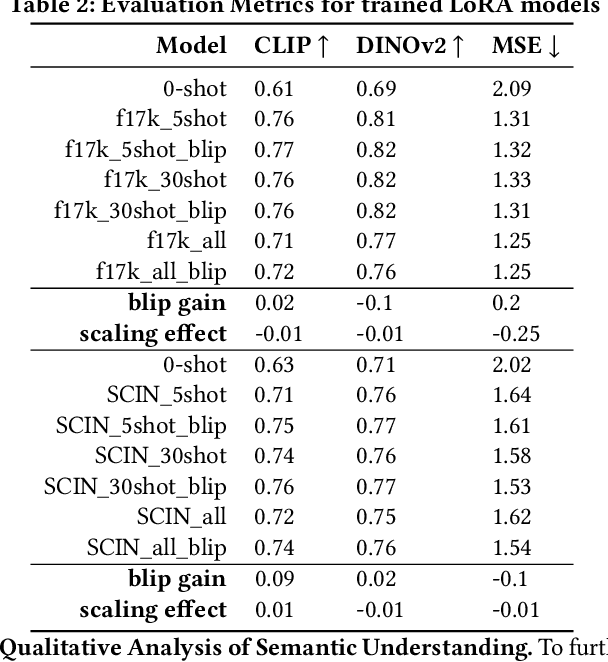
Abstract:With the continuous advancement of vision language models (VLMs) technology, remarkable research achievements have emerged in the dermatology field, the fourth most prevalent human disease category. However, despite these advancements, VLM still faces "hallucination" in dermatological diagnosis, and due to the inherent complexity of dermatological conditions, existing tools offer relatively limited support for user comprehension. We propose SkinGEN, a diagnosis-to-generation framework that leverages the stable diffusion (SD) method to generate reference demonstrations from diagnosis results provided by VLM, thereby enhancing the visual explainability for users. Through extensive experiments with Low-Rank Adaptation (LoRA), we identify optimal strategies for skin condition image generation. We conduct a user study with 32 participants evaluating both the system performance and explainability. Results demonstrate that SkinGEN significantly improves users' comprehension of VLM predictions and fosters increased trust in the diagnostic process. This work paves the way for more transparent and user-centric VLM applications in dermatology and beyond.
 Add to Chrome
Add to Chrome Add to Firefox
Add to Firefox Add to Edge
Add to Edge